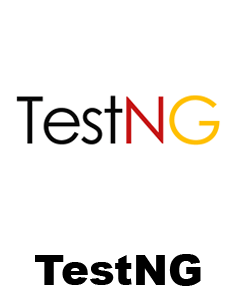1. What is Use Case Testing?
Ans:
Use Case Testing is a testing approach that focuses on evaluating software based on how end users interact with the system. It involves simulating specific user actions and verifying that the software responds correctly. The major objective is to improve usability and dependability by making sure the program performs as the user would expect.
2. What distinguishes the Software Development Life Cycle (SDLC) from the Software Testing Life Cycle (STLC)?
Ans:
The Software Testing Life Cycle (STLC) specifically deals with the testing phase of software development, including tasks like designing test cases, executing tests and reporting defects. In contrast the Software Development Life Cycle covers the entire software process from planning, designing, coding, testing, to maintenance. Therefore, STLC is a subset of the broader SDLC process.
3. What is a Traceability Matrix and why is it important?
Ans:
Test cases are assigned to matching requirements in document called a traceability matrix. It ensures that all specified features and requirements have been properly tested. This matrix helps track test coverage and guarantees that no critical aspect of the software is overlooked during testing.
4. Can you explain Equivalence Partitioning in software testing?
Ans:
Similarity A test design method called partitioning separates input data into groups or partitions and assumes that program will act similarly for each value in each group. Instead of testing every possible input, testers select one representative value from each group. This method enhances test coverage while reducing the number of test cases.
5. What is White Box Testing and what are its common types?
Ans:
White Box Testing involves analyzing and testing the internal code and logic of an application. Testers need to have an understanding of how the software works internally. Common types include Unit Testing, which tests individual functions; Integration Testing, which checks interactions between modules; Statement Testing, ensuring each line of code executes; and Branch Testing, which tests all decision paths in the code.
6. What is Black Box Testing and which techniques are used in it?
Ans:
Black Box Testing examines the software’s functionality without any knowledge of the internal code structure. Testers focus on providing inputs and verifying the expected outputs. Techniques used in Black Box Testing include Equivalence Partitioning, Boundary Value Analysis, Decision Table Testing, State Transition Testing and Error Guessing, each helping to uncover different types of defects.
7. How do Static Testing and Dynamic Testing differ?
Ans:
Static Testing is performed without executing the software. It involves reviewing documents, analyzing code manually, or using automated tools to detect defects early in the development process. Dynamic Testing, however, requires running the software to observe its behavior and identify issues during actual execution.
8. What are the main levels of software testing?
Ans:
Software testing is commonly divided into four levels. Verifying individual components is the main goal of unit testing. Integration testing makes ensuring that several modules function as intended when combined. System Testing evaluates the complete system as a whole and Acceptance Testing verifies that the software meets business requirements and user needs before it is released.
9. What key elements are included in a Test Plan?
Ans:
A Test Plan is the comprehensive document outlining all details related to the testing process. It specifies what features will be tested, how testing will be conducted, the tools to be used, roles and responsibilities of the team, the test environment setup and the overall schedule. This document acts as a roadmap for successful and organized testing.
10. How does Data-Driven Testing differ from Retesting?
Ans:
To assess how the software responds to diverse conditions, data-driven testing entails repeating the same test scenario with distinct input data sets. Retesting, on the other hand, is performed to verify that specific defects previously identified have been fixed. While data-driven testing uses varied data sets, retesting repeats the test with the same data.





















